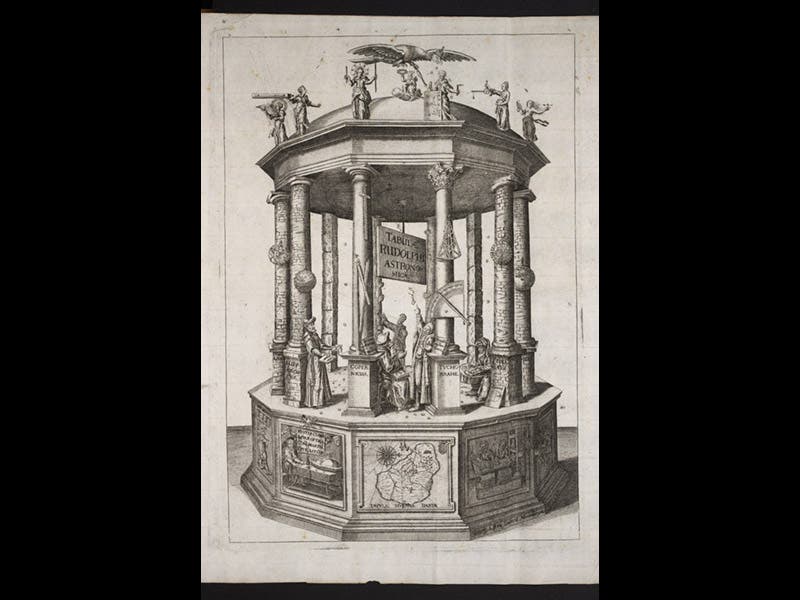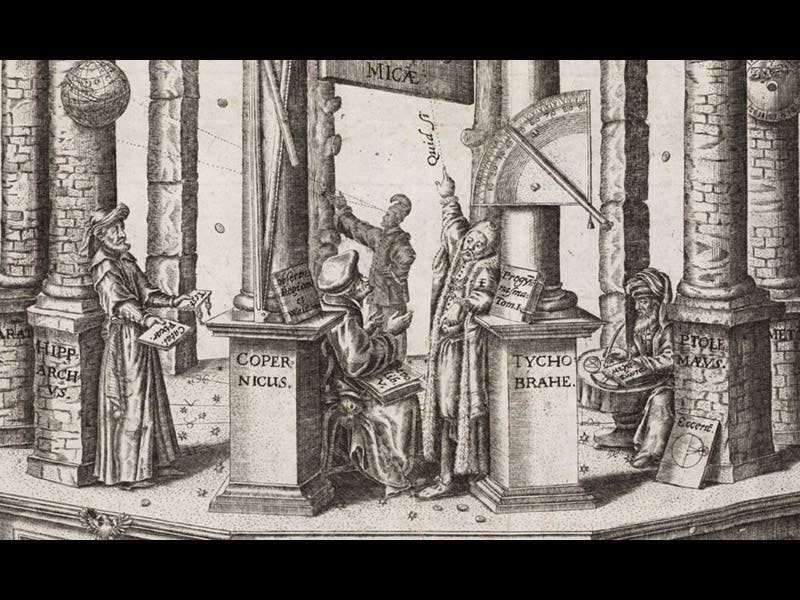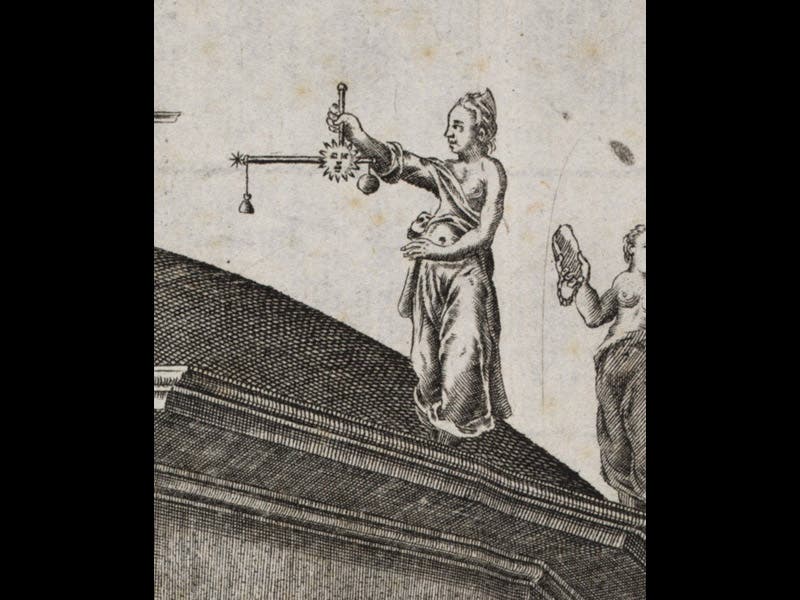Scientist of the Day - Johannes Kepler
Johannes Kepler, a German astronomer, was born Dec. 27, 1571. In 1601, Kepler was serving as Tycho Brahe's assistant in Prague, when Tycho died rather suddenly. It was not so sudden that Tycho could not extract a deathbed promise from Kepler, that Kepler would publish Brahe's lifelong collection of planetary data in the form of tables, and that he would defend Tycho's geo-heliocentric cosmology in the publication. Kepler, inheriting Tycho's title of Imperial Mathematician, busied himself with other matters, such as discovering his laws of planetary motion, but in 1627, he finally made good on his promise, publishing the Tabulae Rudolphinae, the Rudolphine Tables, the most accurate set of planetary tables issued to date (second image). The work contains a frontispiece, designed by Kepler himself, that is one of the most impressive pieces of emblematic chicanery of the entire century (third image).
The engraving, in the form of a Temple of Astronomy, salutes Copernicus and Tycho at front center (even though Tycho rejected the Copernican cosmology, he admired Copernicus more than any other astronomer except himself; fourth image). Tycho has the place of honor, his contribution to astronomy represented by a splendid Corinthian column, and he is asking a question of Copernicus, while pointing at the ceiling of the temple. “Quid si sic,” he asks, “What if it were this way?” The diagram he points to (fifth image) represents the Tychonic cosmology, with the Earth at the center, and all of the other planets circling the Sun, which orbits a stationary Earth. Kepler does indeed seem to be defending the Tychonic system in print. Kepler has fulfilled his deathbed promise to Tycho.
Or has he? What is going on up on the dome? After all, in the engraving, Copernicus, Tycho, Ptolemy, and Hipparchus are supporting the dome, so something important is being depicted there (sixth image). When we examine the six personifying statues on the dome, we realize that they represent the achievements of Kepler himself: the ellipse law (just right of center); the area law, next to it (seventh image), the period law (just left of center), the suggestion that a solar force moves the planets in their orbits (far right), and Kepler’s work in optics (far left). In case the viewer does not figure this out (and the hope was that Tycho’s heirs would not figure it out), Kepler himself is portrayed in a basement room at bottom left (first image). It seems to be a self-effacing placement, suggesting that Kepler was not a worthy companion for Copernicus and Tycho, but there on his table sits a model of the dome, a reminder that the capstone of astronomy represents Kepler’s discoveries. A frontispiece that is being offered as a memorial to Tycho Brahe is in fact a glorification of the life and work of Johannes Kepler. Emblematic title pages can be so delightfully devious!
Dr. William B. Ashworth, Jr., Consultant for the History of Science, Linda Hall Library and Associate Professor, Department of History, University of Missouri-Kansas City. Comments or corrections are welcome; please direct to ashworthw@umkc.edu.













